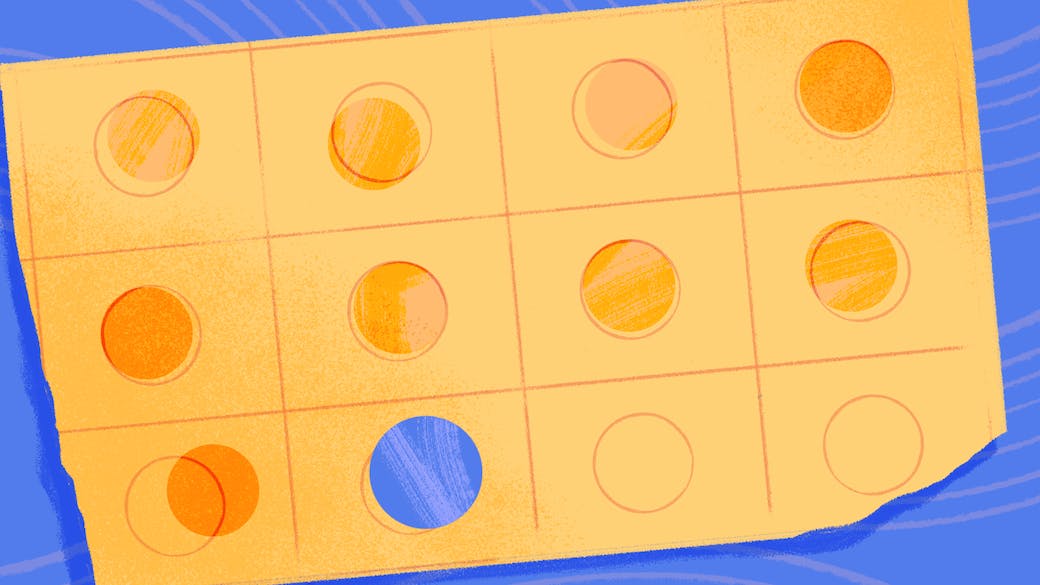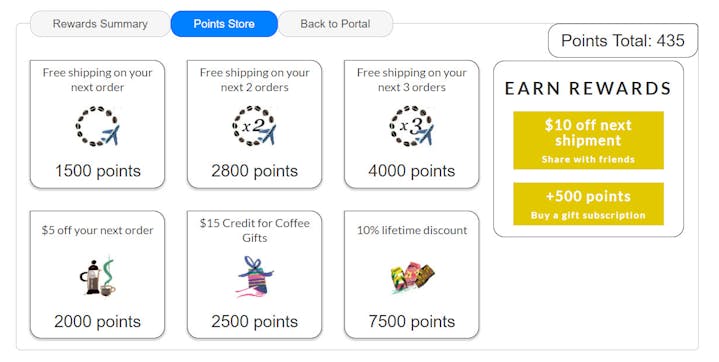5 Effective Customer Loyalty Programs for Small Businesses


According to Invesp, it costs five times as much to attract a new customer than to keep an existing one. This is why it’s so important for small businesses to turn one-time buyers into loyal, repeat customers.
Customer loyalty programs can be your secret weapon: Mention Me’s 2021 Customer Advocacy Report found that 40% of customers are likely to buy again from brands that reward loyalty.
Let's take a look at the different types of customer loyalty programs, plus examples of each type from companies in several different industries, each selling different types of products.
What are customer loyalty programs?
A customer loyalty program is a system where a business offers rewards to its customers who make frequent purchases. From a business perspective, it’s a tactic used to encourage customers to repeatedly buy from your business.
There are lots of different types of customer loyalty programs, like refer-a-friend programs that offer customers a discount if their friend signs up or makes a purchase, reward points programs, and programs that provide free perks. We’ll dive into these (and others) later in this post.
The benefits of having a customer loyalty program
A customer loyalty program helps you build stronger relationships with your customers by rewarding them for buying your products or services. There are several important benefits of having a customer loyalty program:
Improving customer retention.
Encouraging repeat business.
Increasing customer lifetime value.
Building stronger relationships with your customers.
Increasing customer satisfaction.
Providing a differentiator with your competitors.
Boosting revenue.
Accenture found that members of customer loyalty programs typically spend, on average, 12% to 18% more than other customers.
For a small business — especially if you’re in an increasingly competitive space — a customer loyalty program that rewards returning customers could be what differentiates you from your (bigger) competitors.
Types of customer loyalty programs for small businesses (with examples)
There are lots of different types of customer loyalty programs that all work differently and offer different rewards or benefits for your customers.
Let’s look at five types of loyalty programs that are suitable for small businesses. And if you need some inspiration for creating a loyalty program for your business, we’ve hand-picked five great loyalty program examples below.
1. Customer loyalty points programs
Points programs are one of the most popular types of customer loyalty programs. Customers earn points when they spend money with your company, and they can redeem the points to get a discount on their next purchase or for other special offers.
The Atlas Coffee Club rewards program is a great example of this. Customers earn reward points for referring friends, buying gift subscriptions, each country they “visit” (receive coffee from), the miles their coffee travels, and the money they save by being a subscriber.
These points can then be used for free shipping, a discount on their next order, or even a lifetime discount:

Points programs like this build customer loyalty by encouraging repeat, regular purchases. But when offering rewards in exchange for points, there’s a fine line: You want to encourage customers to make repeat purchases to build up their points, but not so many that it feels like the reward points have no value.
If your customers need to accumulate thousands of points to qualify for a reward or if it will take them a really long time to do so (based on your average order value), then your points program may even deter customers from making that repeat purchase as they’ll never earn enough points for the reward.
2. Mission-driven customer loyalty programs
Not all loyalty programs focus on giving their customers discounts or rewards. A mission-driven customer loyalty program means that your customers feel like their purchase or use of your product helps to “make a difference” and improve the world we live in.
A great example of this is Whereby, who launched a program in 2021 to plant a tree for every video meeting that happens on their platform:
“Living a more climate-positive lifestyle is something we think we should all be thinking more about. Every conversation held on Whereby is one less journey to a meeting; so why not double down on that effort and plant part of a tree while you do it, too?”

Mission-driven loyalty programs can be more effective when you partner with a nonprofit organization that aligns with your mission. In Whereby’s case, they partnered with an organization called Brynk to plant the trees on their behalf.
This is a smart way for Whereby to differentiate itself from other brands in the space. It gets people to start using its product, and it creates a positive first impression by making customers feel like they’re doing good by using it.
3. Subscription programs
Subscription programs build customer loyalty by turning customers into repeat purchasers. A subscription program often gives customers a discount compared to one-off purchases or offers exclusive products, content, or services that aren’t available to non-subscribers.
If your small business sells products that are consumable and suitable for repeat purchases (food and drink, health and beauty, cleaning products, or even clothing are popular choices) then subscription programs might be a good customer loyalty program for your company.
There are lots of different subscription programs out there (you might even already subscribe to one or two), but a great example is Birchbox, a monthly beauty subscription box.

Birchbox offers plenty of benefits to all their subscribers, plus an added incentive for customers to stick around with their VIP loyalty program. This VIP program is only activated once a customer has been a subscriber for six consecutive months, which encourages long-term customer retention.
4. Community programs
All of your customers have one thing in common: you. But they will likely have plenty of other things in common as well — similar interests, hobbies, and challenges. A community program brings together like-minded customers to engage with and learn from each other (and your company).
One example you might not expect is bank Monzo:
“At Monzo, our community is at the core of what we do. We wouldn’t be who we are without the engagement, enthusiasm, and feedback that you bring to our online forum, the events we host, and our social media channels.”
Monzo has created a community where their customers can share product feedback and ideas, chat about related topics (financial news, fintech, and all things money), and even share insights on their competitors.
Community programs don’t offer your customers any tangible reward like discounts, special offers, or even reward points. Instead, they offer a chance to connect with like-minded people.
From sharing tips on how to use your product to learning from each other, customer communities can make a real difference to your customers’ lives and be a real differentiator compared with other companies or products in your space.
5. Refer-a-friend customer loyalty programs
Refer-a-friend loyalty programs are exactly that: They reward customers for referring friends, family, or colleagues, giving them discounts or special offers.
One company that uses a refer-a-friend loyalty program is Mahabis. Interestingly, they offer slightly different referral offers for different regions. For their U.S.-based customers, they offer a 10% discount for you and your friend, whereas in the U.K. it’s a £10 discount.

These programs are a great way to build trust with potential customers, especially for ecommerce or DTC companies that don’t have a brick-and-mortar store for customers to visit and check out the product before they buy. Mention Me found that consumers most trust brand recommendations from their friends.
Get started with a customer loyalty program for your business
We know that offering a loyalty program is a great way to keep your customers coming back for more and turn one-time purchasers into real advocates for your business. But as a small business owner, you won’t have the same resources to invest as big companies, so it’s important to find a loyalty program that works for you.
The first step to setting up a customer loyalty program is working out the right type of program for your business. This means you need to understand your customers: what motivates them, their buying habits, and how they get value from your company.
As you’ve seen, there are lots of different options to choose from, but once you’ve got a program set up, you can evaluate and optimize it over time to get the best results for your business and your customers.

